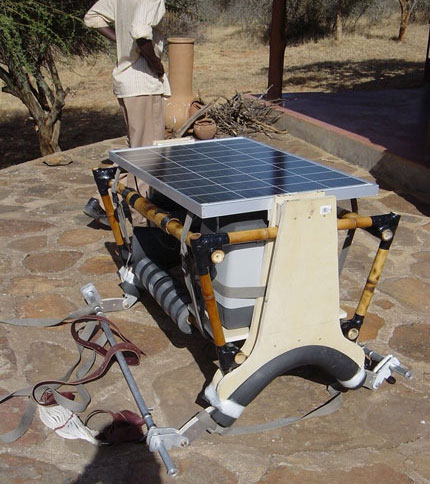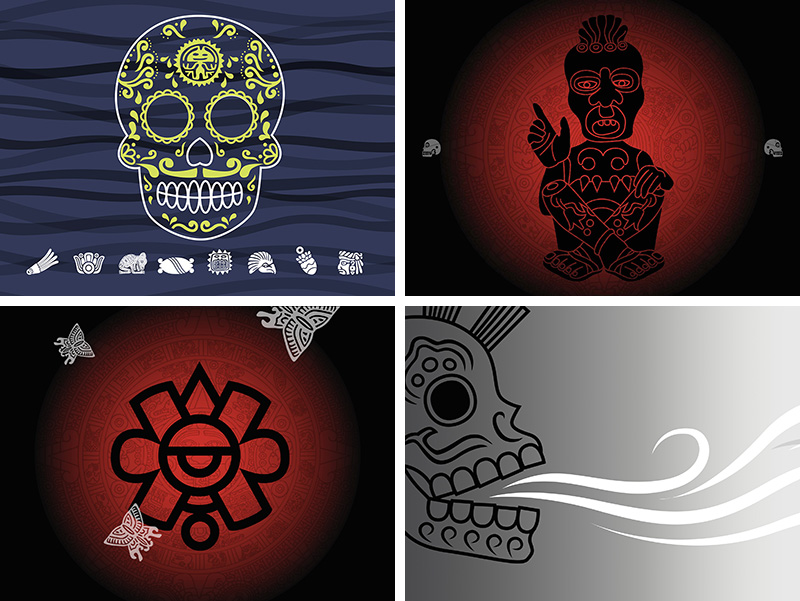
July 18, 2009
Camel Mobile Clinic

Bamboo saddle designed to hold refrigerated unit for preserving medicine.
Photo courtesy Designmatters, Art Center College of Design
The Laikipia and Samburu districts in Kenya are isolated regions populated largely by nomadic peoples. The terrain is harsh and inhospitable, with few roadways, making travel difficult from urban centers. The local population, of around 500,000, suffers from high rates of illiteracy and poor health care. For the past decade, the Kenyan-based Nomadic Communities Trust (NCT) has sent camel convoys — the most efficient and cost-effective means of transportation — to the region with medical supplies. But poor equipment (basically, wooden boxes tied to the camels with abrasive sisal rope) and lack of refrigeration meant that basic medicines such as vaccines could not be made available.
In 2005, the NCT partnered with Designmatters at Art Center College of Design in Pasadena, California, and Princeton University’s Institute of Science and Technology of Materials (PRISM), a multidisciplinary research center in the general field of materials, on several prototypes for methods to preserve and transport medical supplies. A multifunctional system was developed made from bamboo to provide a lightweight, durable ergonomic saddle along with a saddleback structure that holds a compartmented refrigerated unit and solar power generator. The saddles improve the efficiency of the loads carried over rugged terrain. The crystalline solar panels can also be deployed by the mobile clinics for lighting and refrigeration in the field.

Solar-powered refrigerator to be fitted into saddle.
Photo courtesy Designmatters, Art Center College of Design
The project, which could be fully implemented in 2010 if necessary funding is secured, blends relatively affordable technologies with advanced engineering and design. It was devised with a budget of a few thousand dollars and staff from Art Center and Princeton, which was critical because the project was not selected to receive assistance from the World Bank. “We created this project without having to send a team of 20 people back and forth to Kenya for field research,” notes Mariana Amatullo, executive director of Designmatters. To be resourceful, Amatullo and her associates asked the Bronx Zoo to make its camels available to test the saddle, a process that offered vital information without requiring the animals to walk long distances with heavy loads.
Designmatters also engaged Art Center illustration students to develop health education materials addressing issues including family planning and preventing the spread of HIV/AIDS. Because communication in the region is mostly carried out by story tellers, and the topics are sensitive, the students devised a pictorial sequence of stories — often with animal metaphors — that were culturally appropriate and easily understandable by nonliterate communities. The canvas material chosen for the pictorial presentation stands up to harsh weather conditions and can be easily rolled and carried by health counselors.
Amatullo says the project shows the value of collaboration between designers, engineers and development people, and how together they can be incubators for innovation. “We are looking at high-tech work with solar energy blended with low-tech materials like bamboo, and local knowledge, to produce something that is repairable and scalable and has applications far beyond Kenya,” she says. Currently, the saddle-packaging system is being tested in Kenya as well as in Ethiopia, but Amatullo believes it provides a model for any underserved, remote area where camels are found. In Laikipia and Samburu alone, there are an estimated 300,000 occupants who have not yet been reached by mobile health clinics. This project, she adds, “has the potential to change the long-term health and well-being of isolated communities.”
Observed
View all
Observed
By Ernest Beck
Recent Posts
Candace Parker & Michael C. Bush on Purpose, Leadership and Meeting the MomentCourtney L. McCluney, PhD|Essays
Rest as reparations: reimagining how we invest in Black women entrepreneurs Food branding without borders: chai, culture, and the politics of packaging Why scaling back on equity is more than risky — it’s economically irresponsible
 Ernest Beck is a New York-based freelance writer and editor.
Ernest Beck is a New York-based freelance writer and editor.


